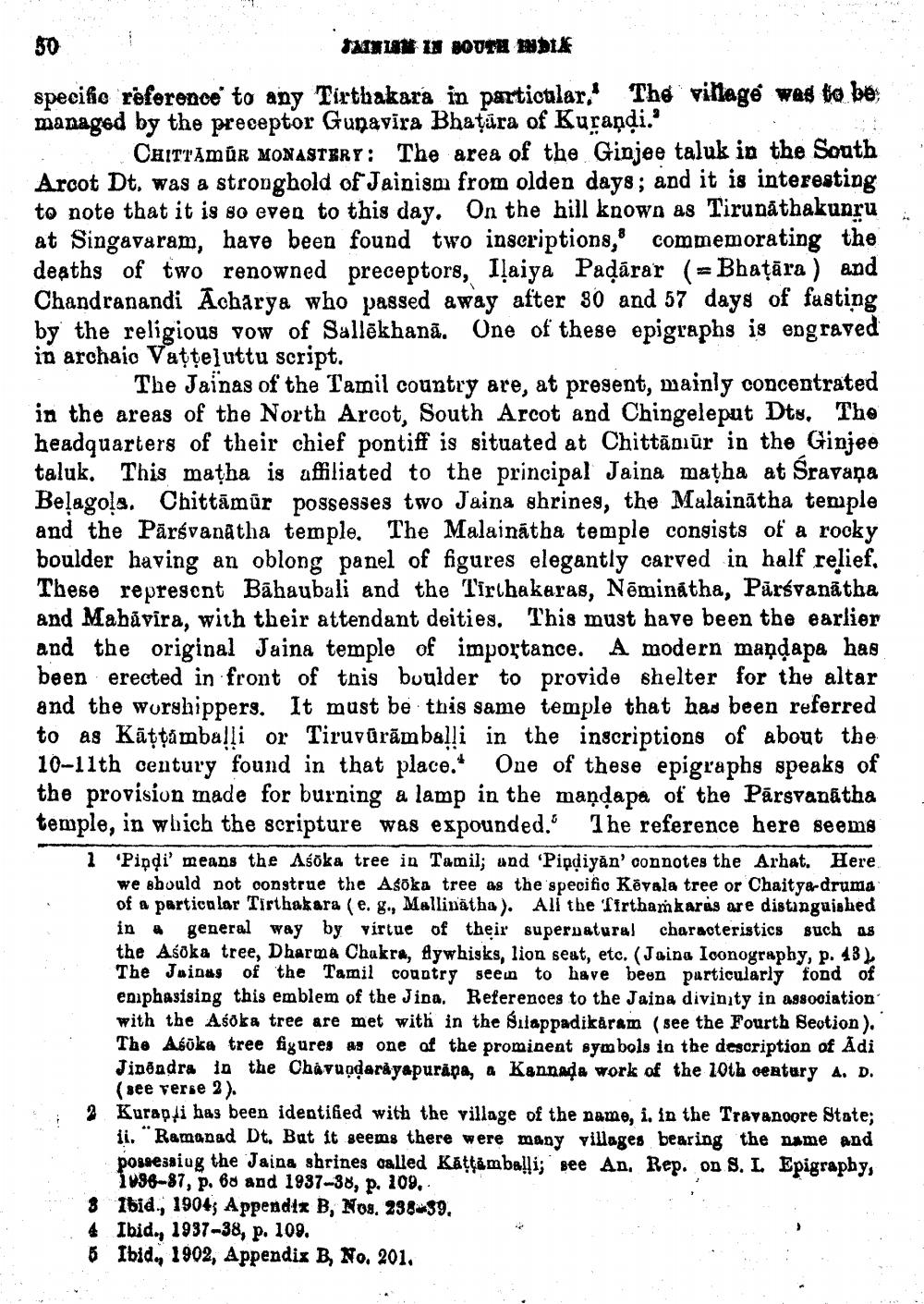________________
50
MIL IN BOUTH INDIA specific reference to any Tirthakara in particular, The village was to be managed by the preceptor Gunavira Bhatūra of Kurandi.'
CHITTĀMÜR MONASTERY: The area of the Ginjee taluk in the South Arcot Dt. was a stronghold of Jainism from olden days; and it is interesting to note that it is so even to this day. On the hill known as Tirunāthakunru at Singavaram, have been found two inscriptions, commemorating the deaths of two renowned preceptors, Ilaiya Paļārar (= Bhatāra ) and Chandranandi Acharya who passed away after 30 and 57 days of fusting by the religious vow of Sallēkhanā. One of these epigraphs is engraved in archaic Vatteluttu script.
The Jainas of the Tamil country are, at present, mainly concentrated in the areas of the North Arcot, South Arcot and Chingeleput Dts, Tho headquarters of their chief pontiff is situated at Chittāniūr in the Ginjee taluk. This matha is affiliated to the principal Jaina matha at Sravana Belagola. Chittāmûr possesses two Jaina shrines, the Malainātha temple and the Pārsvanátha temple. The Malainátha temple consists of a rocky boulder having an oblong panel of figures elegantly carved in half relief. These represent Babaubali and the Tirthakaras, Nēminátha, Pārsvanātha and Mabăvira, with their attendant deities. This must have been the earlier and the original Jaina temple of importance. A modern maņdapa has been erected in front of this boulder to provide shelter for the altar and the worshippers. It must be this same temple that has been referred to as Kāțçãmballi or Tiruvūrām balli in the inscriptions of about the 10-11th century found in that place. One of these epigraphs speaks of the provision made for burning a lamp in the mandapa of the Pārsvanatha temple, in which the scripture was expounded. The reference here seems
1 Pipdi' means the Asoka tree in Tamil; und Piqdiyān' connotes the Arhat. Here
we should not construe the Asoka tree as the specific Kavala tree or Chaitya-drums of a particular Tirthakara (e. g., Mallinātba). All the Tirthankards are distinguished in general way by virtue of their supernatural characteristics such as the Asoka tree, Dharma Chakra, Aywhisks, lion seat, etc. (Jaina Ioonography, p. 13, The Jainas of the Tamil country seen to have been particularly fond of eniphasising this emblem of the Jina. References to the Jaina divinity in association with the Asoka tree are met with in the Sulappadikäram (see the Fourth Seotion). The Asöka tree figures as one of the prominent symbols in the description of Adi Jinëndra in the Chavu dariyapuräpa, a Kannada work of the 10th century A. D.
(see verse 2) 2 Kurap di has been identified with the village of the name, i, in the Travancore State;
ii. Ramanad Dt. But it seems there were many villages bearing the name and possessing the Jaina shrines called Kaţtamballi; see An. Rep. on S. L Epigraphy,
1996-87, p. 60 and 1937-38, p. 109,3 Ibid., 19045 Appendix B, Nos. 238.39. 4 Ibid., 1937-38, p. 109.
Ibid., 1902, Appendix B, No. 201.




